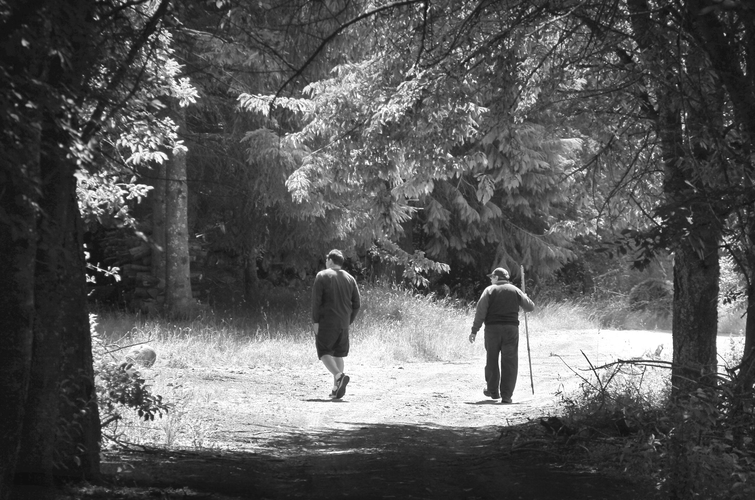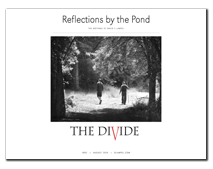[Jesus said,] “Either make the tree good and its fruit good, or make the tree bad and its fruit bad; for the tree is known by its fruit. You brood of vipers, how can you, being evil, speak what is good? For the mouth speaks out of that which fills the heart. The good man brings out of his good treasure what is good; and the evil man brings out of his evil treasure what is evil.” Matthew 12:33–35
Where Did We Go Wrong?
When did this all begin?
Every morning we rise to stories of lies and deceit, corruption, illegal payoffs, blatant criminality, sexual perversion thrust before our eyes, murdering terrorists set free while praying churchgoers are imprisoned. We dwell in a cultural cesspool in which lies are embraced and truth ridiculed, a culture in which shame has become a byword, a culture in which evil is ascendant and righteousness descendant.
Where did all this begin?
Certainly the Fall, in Eden, opened the gate for evil. That one, fateful decision by Adam and Eve to choose the serpent’s lies over the promises of their Maker, introduced evil and sin into Paradise, thus corrupting both mankind and the earth on which they dwelt.
But was there another turning point? Was there a subsequent moment when today’s cavernous division separating good from evil was inaugurated?
The first fruit of the Fall was embodied in man’s first son, Cain. Along with his parents’ DNA, sin was passed down into his very being, where it took root and blossomed into putrid fruition.
The first man and woman were created by and for Yahweh God. Adam and Eve were created without sin, but because of their rebellion, henceforth their children—all children—would be born in sin and for sin. The birth of Cain gave sufficient proof that evil would now be packaged in every birth, in every human’s DNA. From an earthly standpoint, every human being is offered a choice, a path to pursue: he or she can follow the path of least resistance and pursue the corruption that dwells in their DNA, or they can pursue God.
Cain, the first son, embraced evil, while his younger brother embraced God. And therein lies the first branch, the initial spark of the division remaining in place still today.
For this is the message which you have heard from the beginning, that we should love one another; not as Cain, who was of the evil one and slew his brother. And for what reason did he slay him? Because his deeds were evil, and his brother’s were righteous.
1 John 3:11–12
Like his parents, Cain made an egregious choice. Unlike his parents, Cain was evil to the core; like Judas Iscariot (John 13:27), like the future Antichrist (2 Thessalonians 2:9), the first son sold his soul to Satan.
But this was not yet the true division we see today, for, though the line of evil continued through Cain, that line of righteousness died with Abel.
In Cain’s offspring, his abbreviated line recorded in Genesis (Abel had no offspring because his brother Cain murdered him) we see the progression of self-centered corruption. Evil is both a noun and a verb, both a philosophy and an action. Cain embraced evil—he trusted in it. It was both who he was and how he behaved. And this trait was passed down to his great-great-great-great grandson, Lamech.
Lamech thought up the idea of having not one wife, but two (polygyny), thus breaking Yahweh’s spoken ideal of husband and wife being “one flesh” (Genesis 2:24). He seems to be an arrogant, boastful, violent man—as indicated by his final recorded words.
And Lamech said to his wives,
Genesis 4:23-24
“Adah and Zillah,
Hear my voice,
You wives of Lamech,
Give ear to my word,
For I have killed a man for striking me;
And a boy for wounding me;
If Cain is avenged sevenfold,
Then Lamech seventy-sevenfold.”
Lamech was a worldly, boastful individual who placed his hope in the beauty and strength of worldly things. His is the voice of the fallen world, celebrating itself rather than Yahweh God, and a life pursued for itself rather than for Him.
By contrast, the third son of Adam and Eve, Seth, conceived after the loss of Abel, inaugurated a line of righteousness. His own son, Enosh, in whose time “men began to call upon the name of Yahweh,” would confirm this. That is, though private worship of God had earlier been observed, now public worship of the covenant God, Yahweh, would be established.
This was not a return to the early days of Paradise—of sweet, intimate communion between man and his Maker; those days were now over, and there would be no return to them until the final days of the far-future Eschaton. But here was man acknowledging the lordship of Yahweh over his life, of pursuing righteousness over evil.
More than that it is here the line of the one who indeed “shall bruise [the serpent] on the head” is established, for Seth’s line will lead to King David and Jesus of Nazareth, the Messiah, the Son of God, who will in this earth’s final days utterly defeat Satan, consigning him to his eternity in the lake of fire.
Thus the true divide between the two occurred between the first and third sons of Adam and Eve: between Seth and the descendants of Cain. And that spiritual divide remains firmly in place today, between those who worship God, and those who worship other “gods”; between those pursuing righteousness, and those pursuing evil; between those obeying God, and those obeying only self; between God’s eternal system and Satan’s temporal—and temporary—system.
Issue #892 August 2024
Reflections by the Pond is published monthly at dlampel.com and is © 2024 David S. Lampel.
Unless otherwise indicated, all Scripture quotations taken from the (LSB®) Legacy Standard Bible®, Copyright © 2021 by The Lockman Foundation. Used by permission. All rights reserved. Managed in partnership with Three Sixteen Publishing Inc. LSBible.org and 316publishing.com. Cover photo by Miguel Tejerina on Unsplash. This and all of our resources are offered free-of-charge to the glory and praise of Christ our Lord.



